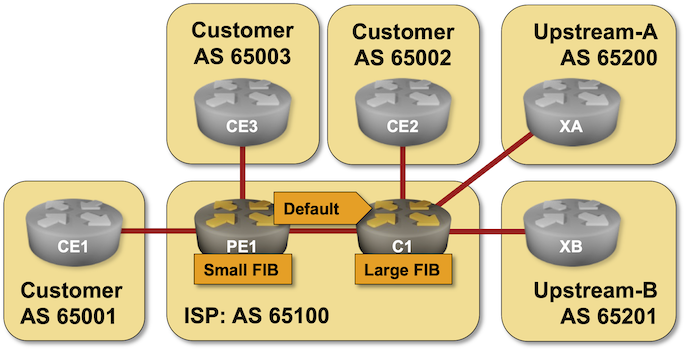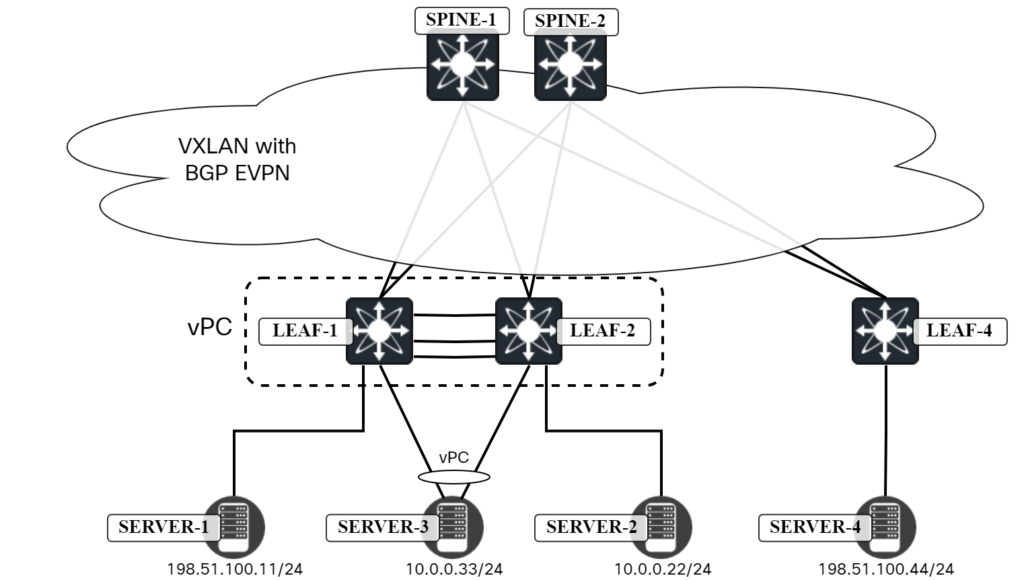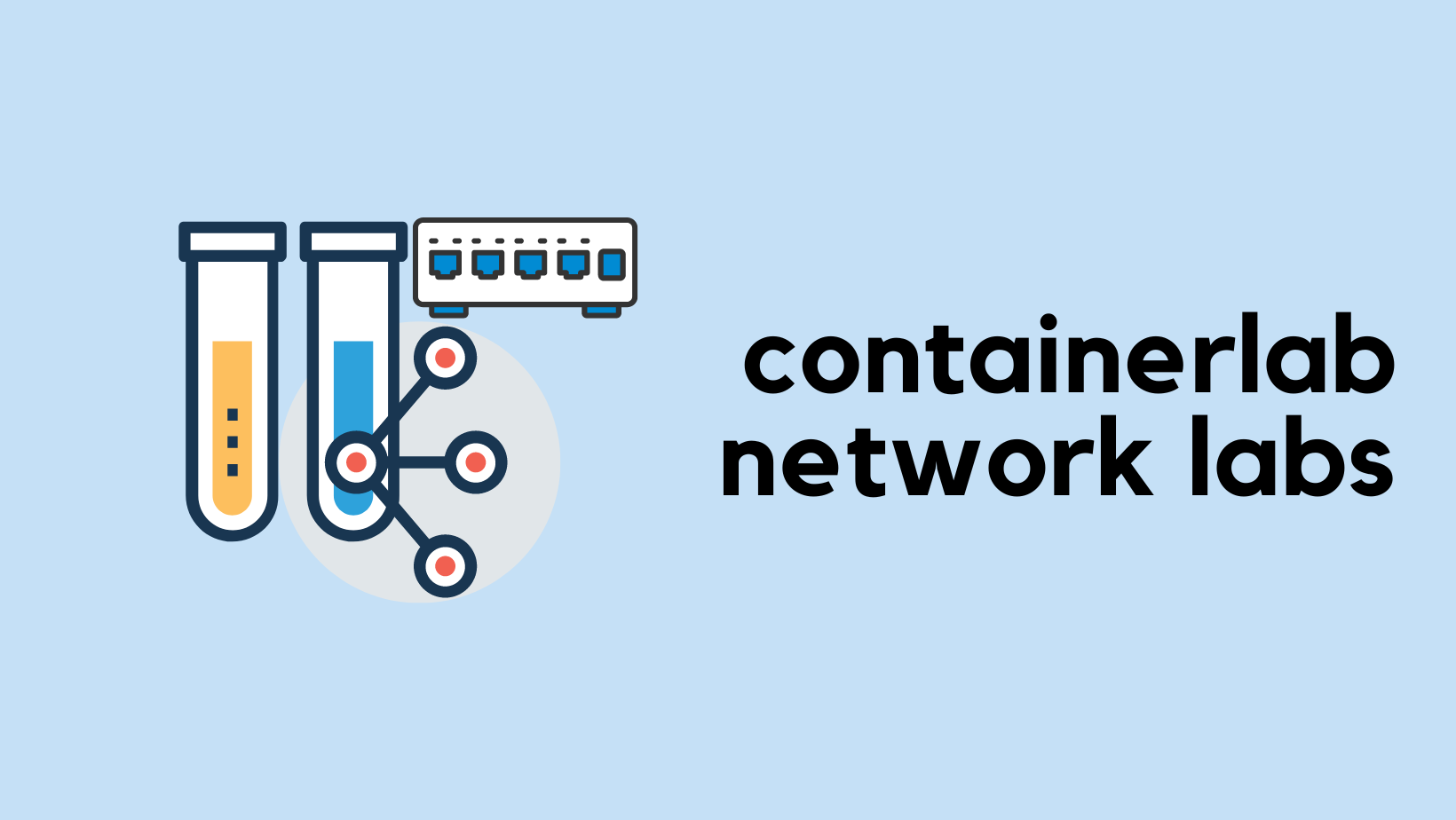0
In the previous section, we built a Single-AS EVPN Fabric with OSPF-enabled Underlay Unicast routing and PIM-SM for Multicast routing using Any Source Multicast service. In this section, we configure two L2-Only EVPN Instances (L2-EVI) and two L2/L3 EVPN Instances (L2/3-EVI) in the EVPN Fabric. We examine their operations in six scenarios depicted in Figure 3-1.
Scenario 1 (L2-Only EVI, Intra-VN):
In the Deployment section, we configure an L2-Only EVI with a Layer 2 VXLAN Network Identifier (L2VNI) of 10010. The Default Gateway for the VLAN associated with the EVI is a firewall. In the Analyze section, we observe the Control Plane and Data Plane operation when a) connecting Tenant Systems TS1 and TS2 to the segment, and b) TS1 communicates with TS2 (Intra-VN Communication).
Scenario 2 (L2-Only EVI, Inter-VN):
In the Deployment section, we configure another L2-Only EVI with L2VNI 10020, to which we attach TS3 and TS4. In the Analyze section, we examine EVPN Fabric's Control Plane and Data Plane operations when TS2 (L2VNI 10010) sends data to TS3 (L2VNI 10020), Inter-VN Communication.
Scenario 3 (L2/L3 EVI, Intra-VN):
In the Deployment section, we configure a Virtual Routing and Forwarding (VRF) Instance named VRF-NWKT with L3VNI 10077. Next, Continue reading









